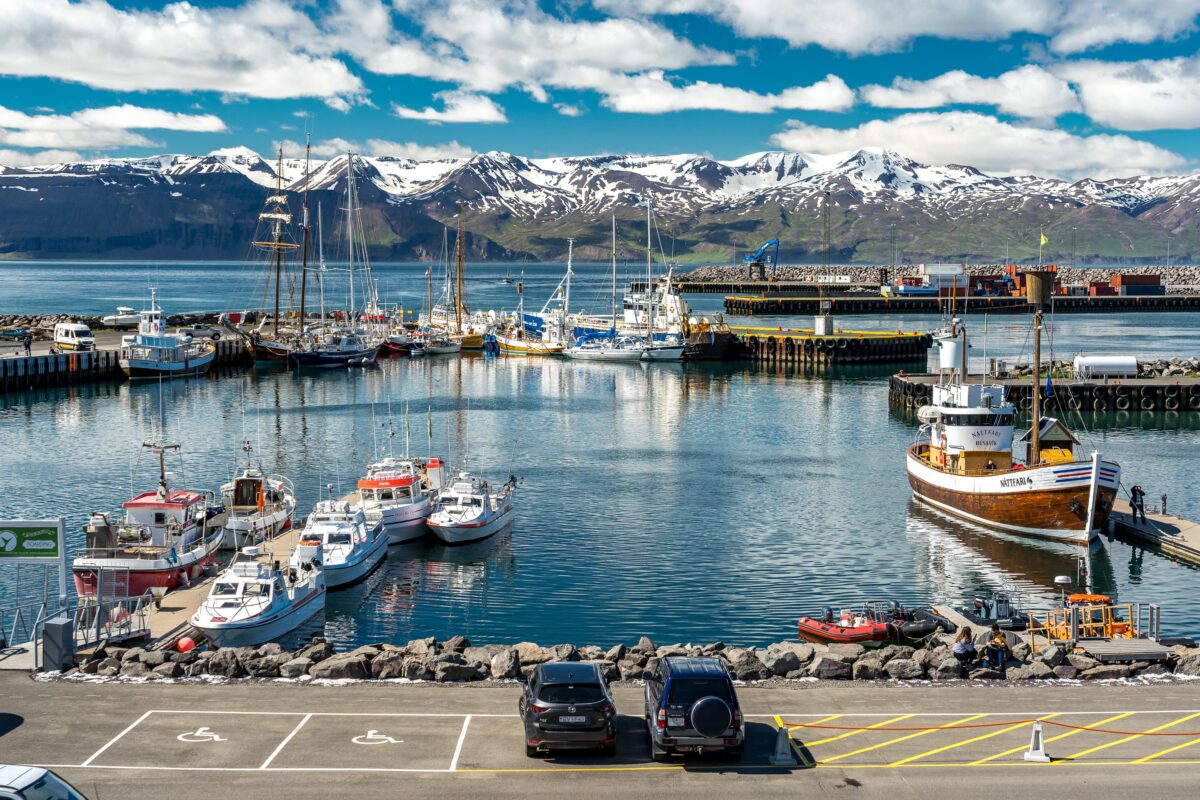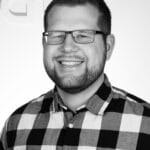Erfitt hefur reynst að nýta fiskeldismykju en hugmyndir hafa verið uppi um að framleiða lífkol úr henni. Lífkol eru jarðvegsbætandi efni sem hafa margvíslega eiginleika, t.d. að binda kolefni og bæta jarðvegsskilyrði. Markmið rannsóknarinnar var að bera saman áhrif lífkola framleidd úr fiskeldismykju frá ferskvatnseldi annars vegar og saltvatnseldi hins vegar við áhrif hefðbundinna lífkola framleidd úr við og trjáafgöngum. Áhrif lífkola í mismunandi hlutföllum á vöxt kálplantna voru könnuð. Niðurstöður sýndu að lífkol framleidd úr ferskvatns fiskeldismykju höfðu jákvæð áhrif á vöxt kálplantna, sambærileg áhrifum lífkola úr trjáafgöngum, en lífkol framleidd úr saltvatnsfiskeldismykju höfðu neikvæð áhrif á vöxt kálplanta og ullu mestum afföllum.
_____
Aquaculture sludge has proven to be difficult to utilise, however, there have been ideas of producing biochar from it. Biochar is a soil-improving material that has a variety of properties, such as sequestering carbon and improving soil conditions. The aim of the study was to evaluate the effects of biochar produced from freshwater sludge and saltwater sludge, with biochar produced from wood and tree residues. The effects of biochar were investigated in different concentrations on the growth of lettuce plants. Results showed that biochar made from freshwater sludge had a positive effect on the growth of lettuce and was comparable to biochar from tree residues, while biochar produced from saltwater sludge had a negative effect on the growth, causing the most losses.
Author: Kristín Edda Gylfadóttir
Saltfiskur hefur í aldaraðir verið ein mikilvægasta útflutningsvara Íslendinga og á sér djúpar rætur í sögu og matarmenningu þjóðarinnar. Þrátt fyrir það er þekking og neysla á saltfiski innanlands takmörkuð, einkum meðal yngri kynslóða. Neytendakönnun sem Matís framkvæmdi árið 2019 sýndi skýrt að áhugi og neysla minnkaði eftir aldri, og að saltfiskur væri oft talinn of saltur. Þessar niðurstöður vöktu þörf fyrir ítarlegri könnun á upplifun neytenda af saltfiski með mismunandi saltstyrk.
Í verkefninu Saltfiskkræsingar, sem er þriggja ára norrænt samstarf Íslands, Noregs og Færeyja, var framkvæmd neytendakönnun sumarið 2025. Markmið hennar var að kanna hvernig saltmagn í útvötnuðum saltfiski hefði áhrif á geðjun og upplifun neytenda, og hvort munur væri eftir aldri. Þátttakendur voru annars vegar 18–35 ára og hins vegar 55–75 ára. Alls tóku 106 þátt í könnuninni, og smökkðu saltfisk sem var mis saltur (~1,1%, ~1,7% og ~2,5%). Metin var heildargeðjun, saltbragð og hentugar matreiðsluaðferðir, auk þess sem þátttakendur svöruðu spurningum um þekkingu, reynslu og neysluvenjur tengdum saltfiski.
Niðurstöðurnar gefa mikilvægar vísbendingar um að útvatnaður saltfiskur sem inniheldur um ~2,5% salt sé of saltur, sérstaklega að mati yngri neytenda, en að ~1,1% saltstyrkur sé of lágur. Saltmagn hefur afgerandi áhrif á geðjun og um 1,7% saltstyrkur virðist vera hæfilegt jafnvægi milli bragðs, áferðar og væntinga neytenda. Mikil dreifing í svörum sýnir að ekki er til eitt „rétt“ saltmagn, heldur þarf að huga að fjölbreyttu vöruúrvali sem höfðar til ólíkra hópa. Þekkingar- og reynslumunur á milli kynslóða kallar á aukna fræðslu og kynningu, sérstaklega með áherslu á að gera saltfisk aðgengilegan og áhugaverðan fyrir yngra fólk.
_____
Salt-cured fish has long been one of Iceland’s most valuable export products, yet domestic knowledge and consumption remain limited, particularly among younger generations. A consumer survey conducted by Matís in 2019 indicated declining interest with age and frequent perceptions of the product as overly salty. To address these issues, a consumer test was carried out in 2025 within the Trendy-Cod project, a three-year Nordic collaboration between Iceland, Norway, and the Faroe Islands.
The consumer survey aimed to evaluate consumer perceptions of desalted fish with different salt levels and to identify potential generational differences. A total of 106 participants, aged 18–35 and 55–75, assessed fish samples with ~1.1%, ~1.7%, and ~2.5% residual salt. Participants rated overall liking, saltiness, and preferred cooking methods, and provided information on their knowledge and consumption habits. Findings show that salt level strongly influences liking. Fish with ~2.5% salt was often considered too salty, particularly by younger consumers, whereas ~1.1% was judged too bland. A concentration around 1.7% appears to represent the best compromise between taste, texture, and consumer expectations. The results highlight the need for diversified product ranges and improved education to increase acceptance, especially among younger consumers.
View report
Skýrsla þessi er greining á stöðu innlendrar þekkingar varðandi sveppaeiturefni (e. mycotoxins) í matvælum á Íslandi, sérstaklega korni. Sveppaeiturefni eru eiturefni sem myndast í sumum tegundum sveppa og eru alvarleg ógn við matvælaöryggi (e. food safety) vegna slæmra áhrifa á heilsu fólks. Sveppaeiturefni geta skaðað dýr og dregið úr afurðum í búfjárrækt.
Mjög takmörkuð gögn eru til um sveppaeiturefni í innlendu korni. Oftast sýna niðurstöður að engin eða fá sveppaeiturefni eru mælanleg í innlenda korninu. Sveppaeiturefni hafa mælst við eftirlit með innfluttu fóðri, yfirleitt í mjög litlu magni ef þau hafa greinst. Lagt hefur verið mat á sveppaeiturefni í fæðu Íslendinga með mælingum á þvagi. Í ljós kom að Íslendingar voru útsettir fyrir sveppaeiturefnum í samræmi við niðurstöður frá öðrum Evrópulöndum en gildi fyrir eitt efnið var þó lægra fyrir Ísland en hin löndin.
Vænta má veðurfarsbreytinga á Íslandi á komandi árum. Í kjölfar slíkra breytinga er viðbúið að breytingar verði á vexti sveppa í kornökrum og mögulegri myndun sveppaeiturefna. Einnig skiptir máli að stefnt er að aukinni kornrækt á Íslandi. Í ljósi þessa er mjög mikilvægt að rannsóknir fari fram á myndun sveppaeiturefna við íslenskar aðstæður til að tryggja öryggi kornsins bæði fyrir búfé og til manneldis.
Upplýsingar skortir um áhrif umhverfisaðstæðna á myndun sveppaeiturefna á Íslandi. Þörf er á að rannsaka samsetningu sveppaflórunnar í korni á akri og í geymslum. Leiða þarf í ljós hvaða áhrif íslenskar umhverfisaðstæður hafa á myndun þessara efna. Með þekkingu af þessu tagi verður hægt að beita sveppavarnarefnum (e. fungicides) markvisst og forðast óþarfa notkun þeirra.
Eftirlit með sveppaeiturefnum er enn of takmarkað á Íslandi. Nú þegar ætti að taka upp árlegt eftirlit með sveppaeiturefnum í innlendu og innfluttu korni í ljósi aukinnar áherslu á kornframleiðslu innanlands.
____
This report is an analysis of the current state of domestic knowledge regarding mycotoxins in food in Iceland, particularly in cereals. Mycotoxins are toxic compounds produced by certain fungi and represent a serious threat to food safety due to their harmful effects on human health. Mycotoxins can also harm animals and reduce productivity in livestock production.
Very limited data are available on mycotoxins in domestic cereals. Most results indicate that no, or only few, mycotoxins are detectable in Icelandic grain. Mycotoxins have been detected during monitoring of imported feed, usually at very low levels if present. Human exposure to mycotoxins in Iceland has been assessed through measurements in urine. The results showed that Icelanders were exposed to mycotoxins at levels comparable to findings in other European countries, although values for one mycotoxin were lower in Iceland than elsewhere.
Climatic changes are expected in Iceland in the coming years. Such changes are likely to affect fungal growth in cereal fields and the potential formation of mycotoxins. Moreover, plans exist to increase cereal cultivation in Iceland. In light of this, it is of great importance to conduct research on the formation of mycotoxins under Icelandic conditions in order to ensure the safety of cereals, both for livestock feed and human consumption.
Information is lacking on the impact of environmental conditions on mycotoxin formation in Iceland. Research is needed on the composition of fungal communities in cereals in the field and during storage. It is also essential to determine how Icelandic environmental conditions influence the formation of these compounds. Such knowledge would enable the targeted use of fungicides and help to avoid unnecessary applications.
Monitoring of mycotoxins in Iceland is still too limited. Annual monitoring of mycotoxins in cereals should already be implemented, given the increasing emphasis on domestic cereal production.
View report

Hvernig eflum við sjálfbærar fiskveiðar og stuðlum að verndun sjávarvistkerfa?
Haraldur Arnar Einarsson, sérfræðingur á Hafrannsóknastofnun og Sveinn Margeirsson, framkvæmdastjóri nýsköpunar og loftlagsmála hjá Brim komu til okkar í Matvælið og ræddu meðal annars hafrannsóknir, sjálfbærar fiskveiðar, verndun vistkerfa og aðlögunarhæfni í sjávarútvegi.
MarineGuardian verkefnið hefur það að markmiði að efla sjálfbærar fiskveiðar og stuðla að verndun sjávarvistkerfa í Atlantshafi og Norðuríshafi, með aukinni þekkingu og þróun lausna sem draga úr meðafla, brottkasti, olíunotkun, neikvæðum áhrifum á botnvistkerfi, auka afla á sóknareiningu, og tryggja bætta gagnaöflun og úrvinnslu til ákvarðanatöku og framsetningu sjálfbærniskýrslna.
This report is closed.
View report
The particulate nutrient loads from fed aquaculture organisms are disposed of rather than being harnessed as a valuable nutrient resource. Vermifiltration and vermicomposting of solid wastes are promising approaches for minimising environmental impacts of aquaculture and optimizing productivity. The present study tested the suitability of particulate nutrient loads from a warm-water African catfish Clarias gariepinus aquaculture recirculation system and a cold-water rainbow trout Oncorhynchus mykiss flow-through system as food sources for compost worms Eisenia fetida in a 6 wk controlled feeding trial. Throughout the experimental phase, the worms demonstrated a preference for utilizing aquaculture sludge as their primary food source, exhibiting growth and generating nutrient-rich vermicompost. Worms fed with catfish solids exhibited a higher growth rate. A mixed application of both solid types may enhance worm growth. Heavy metal analysis showed cadmium and lead levels within legal limits for feed use, suggesting no immediate safety barrier to including worm biomass in animal feed. However, while these findings support the potential use of worm meal as a feed ingredient, its efficacy as a fish meal substitute must be confirmed through feeding trials.
Svalbard is situated in the north between mainland Norway and the North Pole. In the coming 10 years, the Snow crab (SC) and Red king crab (RKC) are assumed to establish themselves in the fjords around Svalbard. We have explored conditions for utilizing local SC and RKC in culinary dishes/experiences in Svalbard.
This will contribute to Svalbard’s sustainability as most of the food consumed is transported from mainland Norway. Workshops, test fishery, survey of the tourists’ interest, and development of culinary dishes were performed. Furthermore, we have described the biological, practical, and regulatory conditions for local harvesting, processing, and live holding of the crabs in Svalbard. The survey revealed that most tourists did not know SC or RKC. Still, they were interested in local food, including crabs. Challenges have been identified and solutions proposed to ensure that when SC and RKC are present in the Svalbard fjords, a local, sustainable pot fishery can provide locally caught crabs, offering tourists a “taste of the Arctic”.
View report
This report is closed.
View report
Salmonid blood is an abundant by-product of the relatively large and growing salmonid industry in Iceland and has recently gained increased interest as a source of diverse valuable compounds. Blood collection has posed a challenge due to the delicate nature of both the blood and the currently most valuable final product of the salmonid industry, the fillets. This study examined the efficiency of partial dry-bleeding Atlantic salmon (Salmo salar) related to blood recovery and its potential effects on fillet quality compared to traditional bleeding. The quality of fillets was assessed based on parameters, including sensory attributes, physiochemical, and microbial properties for both partially dry-bled and traditionally bled salmon. The results indicated that partial dry-bleeding for 4.5 min effectively recovered blood equal to 1–2 % of the live weight of Atlantic salmon, 75 % of which was obtainable in the first minute and 90 % during the first 2 min. Aside from possibly causing a slight increase in gaping in the fillet, partial dry-bleeding neither affected the flesh quality of fresh salmon compared to traditional bleeding nor following prolonged storage on ice post slaughter. These results provide valuable insight into salmon blood collection practices and preservation treatments for its utilization potential as a valuable resource.
This report is closed.






